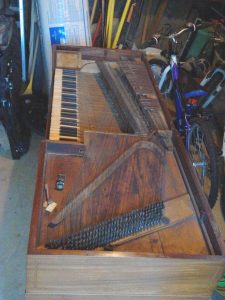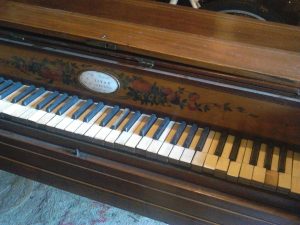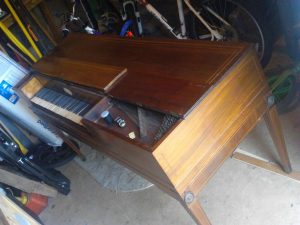Astor piano, c.1790. My phone rang just like any of the many calls I get everyday. Expecting to hear the voice of a customer asking for prices on piano tuning I was met with the warm timber of an older man (not sure how old) asking if I would be interested in an old piano. This kind of call happens from time to time; people thinking they have a rare antique because it is 100 years old when sadly it is just worthy of increasing our deposit at the local landfill. But this time it was different.
As I further inquired about the piano he said it was a 1790 Astor piano and would I like it for free. I was shocked, to say the least. A real antique with historical significance. I am not sure if there is a resale market for this (Yet to be determined. Antique pianos don’t sell in the same way as antique furniture) but there is great historical value. Most of us piano technicians have never seen one in person. It is among the first generation of the Piano-Forte in the square grand shape made one year before Mozart passed away and 90 years after Bartolomeo Cristofori first invented it.
I am excited to see what comes of this. I am looking into the antique value, bringing it to my local Piano Technician Guild’s meeting so they can see it up close, and trying to determine if I should restore it, sell it or donate it to a museum.
Below are a few photos of it. I was surprised to see how small the pianos that Mozart played on were.



I need to verify the date, however the serial number seems set the date at 1789-1790 according to my usual source for dating pianos. It looks like Mr. Astor began selling pianos in the united states in 1789 or 1790. He and his brother were making pianos in England for some time before this. That means that this piano is among the first of its brand in the US.
I am looking forward to unfolding the historical mystery and maybe even restoring it.
